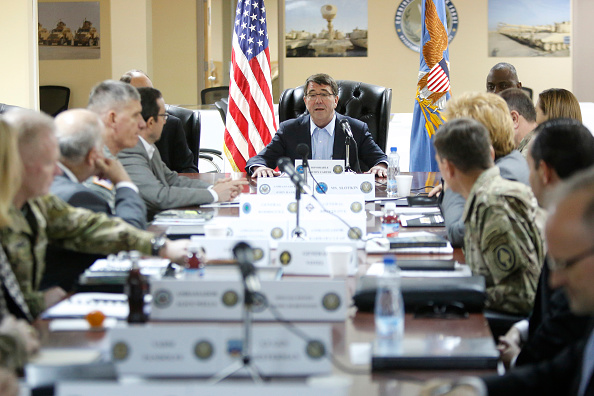
Every U.S. military official says degrading and defeating the Islamic State of Iraq and Greater Syria isn’t a job that can be done by the Pentagon alone. But it also cannot be done without the Pentagon. That’s the bind President Obama finds himself in as he seeks a way to cripple ISIS without putting U.S. combat boots on the ground inside Iraq and Syria (beyond the 3,100 now there to train Iraqi forces and protect the U.S. embassy and other facilities).
So far, the American heavy lifting in the fight against ISIS has come from the skies, where U.S. warplanes have dropped more than 8,200 bombs and missiles on ISIS targets in 2,500 air strikes in Iraq and Syria dating back to August. While Syrian rebels, largely Kurdish, have been able to hold on to the town of Kobani, they haven’t regained any ground. In Iraq, the Pentagon estimates that the Kurdish pesh merga forces have retaken a scant 1.3% of the contested territory ISIS has seized in the past year.
But U.S. officials believe, with sufficient training—and continuing allied airpower—the Iraqi army, Kurdish forces and moderate Syrian rebels will be able to defeat ISIS and take back the territory it seized over the next several years.
The key test of the strategy will come as early as April, when the Pentagon hopes to launch an offensive to retake the northern Iraq city of Mosul, which ISIS seized last June after it drove out the Iraqi army in a humiliating defeat. The Pentagon estimates a 25,000-strong force made up of Iraqi army and Kurdish pesh merga units will be able to overwhelm the up to 2,000 ISIS militants believed to be in control of Mosul. The fight is so vital to validating the U.S. approach that Pentagon officials have made clear that if the Iraqis aren’t adequately trained—and if the aerial bombardment around Mosul hasn’t done enough damage—the assault could be delayed by months.
The Islamic State of Iraq and Greater Syria represents a villain “right out of central casting, just like in a James Bond movie,” says Thomas Donnelly, a defense expert at the American Enterprise Institute. It’s an apt analogy: while there’s no doubt these fanatics are murderous thugs, how much of the shadow they’re now casting around the globe is really theirs, and how much is media magnification due to crafty use of their horrific YouTube videos?
For that matter, the anonymous warning from a senior U.S. military official Feb. 19 that the Iraqis could be willing to try to retake Mosul, Iraq’s second-largest city, from ISIS as early as April shows the U.S. and its allies also are playing the perceptions game. While propaganda has long been typical in war, it’s playing an increasing role in the clash between ISIS and the civilized world because the conflict now underway isn’t a traditional war.
In today’s wired world, lone wolves striking in Copenhagen and Paris—or small groups in Afghanistan and Libya—can give the impression of ISIS spreading like wildfire. But that’s misleading because in all those places it represents a sliver of the local populace that, while a clear and present danger to the locals, isn’t a threat to their political control.
THE PENTAGON VIEW
Let’s start with a couple of givens, from the Pentagon’s perspective. First of all, the U.S. military is now engaged in its third war in Iraq since 1991 not because ISIS represents a clear threat to U.S. soil. Rather, it’s simply in keeping with 1979’s Carter doctrine, when that President made clear that the Persian Gulf was a vital national-security interest that the U.S. would go to war to protect. It came on the heels of the Soviet Union’s invasion of Afghanistan, and the edict was clearly aimed at Moscow’s thirst for petroleum. The flow of oil from the region continues to lubricate the world’s economy, and ISIS, by destabilizing the states in the region, could disrupt it.
Yet if the Pentagon’s top spies disagree over what to do about ISIS, what hope is there for the average citizen to figure it out? “We are in a global war with a radical and violent form of the Islamic religion, and it is irresponsible and dangerous to deny it,” retired Army lieutenant general Michael Flynn said in a Jan. 20 warning published in Politico. Flynn was pushed out of his job early as the head of the Defense Intelligence Agency last August for his management style and views on Islamic terrorism. “There is no cheap way to win this fight,” he wrote, saying the U.S. must treat ISIS, and Islamic groups like it, the way Washington dealt with Germany and Japan in World War II, and the Soviet Union and the Warsaw Pact during the Cold War.
His successor is far less concerned—striking, given that he’s a Marine, a breed rarely given to understatement. While ISIS “can do us harm, they don’t pose an existential threat to the United States,” Lieut. General Vincent Stewart, told the House Armed Services Committee Feb. 3. While the U.S. military could launch more robust attacks against ISIS, Pentagon officials stress that if allied military successes outrun political progress in the region, there will be nothing positive to fill the gap left by ISIS’s destruction. “If I were to map out what ISIL would love to do, ISIL would love to have the United States and western countries out of the region and slowly take apart those other moderate nations who would counter their radical ideology,” Stewart said. “And if they could do that, then they could have a fairly easy opportunity to create the state that they think is appropriate for the region.”
The split over options goes beyond DIA. “If American combat troops are not committed to destroy that standing army, the Islamic State will grow and prosper,” warns retired Marine colonel Gary Anderson. “Young Muslim men world-wide, and some women, are flocking to their banner because they are successfully defying us and mocking us.” Anderson’s solution is nasty, brutish and short. “Go in hard with overwhelming force and destroy their standing army,” he argues. “It would be a relatively short and bloody fight.” Repairing the rubble would be left to the surviving residents.
But that remains a minority view in and around the Pentagon. The measured persistence of the U.S. campaign ultimately will pay off, says a retired four-star general who commanded in Iraq, and was willing to speak only so long as he was not identified by name. “The Americans have shown tremendous patience,” he says, “just as long as there’s not an endless stream of casualties without achieving progress.” While it doesn’t show up on the evening news—ISIS kills Western reporters—the Islamic militants are “getting hammered every day, except when there are dust storms or some other weather event that prevents employment of the intelligence assets,” the retired four-star says. “Imagine the morale in a force where they’re driving down the road and 21 vehicles are taken out very quickly.” Clearing ISIS from Iraq “is doable,” he says; Syria less so until Bashar Assad’s fate is sealed.
ISIS’S ORDER OF BATTLE
The core of ISIS consists of between 25,000 and 35,000 fighters in its self-declared caliphate straddling Iraq and Syria (all of these numbers, Pentagon officials stress, are rough estimates, and can vary from day to day and person to person). About half of them have journeyed to those two ancient lands specifically to fight. Its ranks include about 3,400 from the West, an estimated 150 of them American. The U.S. believes it has killed 6,000 ISIS militants. That suggests the U.S. and its allies have killed about 20% of ISIS’s forces.
Prior to air strikes restricting their massing and movements, ISIS generally operated in motorized companies of about 100 men, largely aboard pickup trucks—and U.S.-built Humvees, once they plundered them from the Iraqi security forces following the fall of Mosul. Their trained units are capable of basic military tactics, along with the ability to plant IEDs and conduct quick raids. “ISIS is a movement that would be hiding in caves if it did not have a professional cadre of trained, internationally recruited professional light infantry occupying towns and cities in Iraq and Syria,” retired Marine Anderson says. “They are very good at what they do, and the rabble of Iraqi/Syrian/Kurdish militias opposing them—and I include the Iraqi army here—is not going to dislodge them, even with American air support.”
WHAT SHOULD OBAMA DO?
Pentagon officials bridle when asked why progress in the now seven-month old campaign against ISIS seems to be moving so slowly. The nearly 2,500 air strikes are small bore compared with earlier air campaigns conducted by the U.S. military. Allied support is spare: U.S. warplanes are responsible for 80% of the air strikes. And the U.S.-led effort to train only 5,000 moderate Syrian rebels a year to reclaim Syrian soil from ISIS has yet to train a single one. So far, the Pentagon has vetted 1,200 of them for training, which is slated to begin next month in Jordan.
There are now 3,100 U.S. troops in Iraq, limited to advising Iraqi troops and protecting the U.S. embassy and other sites. “Our campaign design does not require the introduction of large numbers of U.S. forces,” Army General Martin Dempsey, chairman of the Joint Chiefs of Staff, said at Texas A&M University Feb. 19. “The campaign design does not lend itself to the introduction of large forces which will then immediately take ownership of the issues. Rather, it calls for the introduction of a coalition which includes Iraqis, Kurds, Jordanians, Saudis, Emirates, Qataris, because that’s their issue. They are closest to it and have the most at stake.”
This seemingly-slow pacing is deliberate, Pentagon officials say. They want to make sure that whatever they achieve militarily can be backed up politically. “Clearing is easy,” the retired four-star general who commanded in Iraq says privately. “Clearing and holding the land you’ve taken is hard.” That requires a political infrastructure in place to fill the governing gap once ISIS is ousted.
But progress is puny. While Iraq is nearly 170,000 square miles in size (437,000 square kilometers), the Pentagon has assessed who controls only the 73,000 square miles (190,000 square kilometers), or 43%, that it deems to have value because population and infrastructure are there. In the less than half of Iraq assessed by the U.S. military, the U.S.-backed central government in Baghdad controls 30,000 square miles (77,000 square kilometers), or 18%. The Kurds control 22,000 square miles (56,000 square kilometers), or 13%. ISIS controls 21,000 square miles (55,000 square kilometers), or 12%.
A senior Pentagon official says that including all of Iraq in the calculation would give ISIS a greater share of Iraqi territory, but declined to offer an estimate. The U.S. and its allies, primarily the Kurdish peshmerga, have retaken about 700 square kilometers (270 square miles) of territory—about 1.3%—once held by ISIS in northern Iraq.
There’s only one way to take land, and that’s with well-trained ground forces. That’s why retired Marine general Anthony Zinni thinks the time is right for Obama to acknowledge reality and tell the nation he is sending 10,000 American troops into the fight. Zinni ran the U.S. military in the Middle East and Persian Gulf regions as chief of U.S. Central Command from 1997 to 2000, and still has business dealings in the region. He’s just back from a trip to Cairo, and he says he’s hearing a growing willingness among regional powers to put troops on the ground to fight ISIS—so long as the U.S. is alongside them.
Rumbles from Egypt, Jordan and the United Arab Emirates all suggest those nations are willing to fight on the ground. “I think this is all designed to try to push the United States to put something on the ground,” Zinni said Feb. 23. “If we put a couple of brigades in, I think you’d get five or six regional countries. And I think you could twist the arms of the French, the Belgians and maybe even the Brits.”
Two U.S. brigades, with their supporting personnel, would total about 10,000 troops. Zinni says the nations in the region are not coordinating their efforts in an effort to lure the U.S. into the fight on the ground. “But they’re getting scared, and have gotten angry at ISIS’s atrocious behavior and they’re willing to step up,” he says. “It would have to be a whole set of bilateral relationships, and we would have to pull it together.
The U.S. would have to act as the catalyst to make this happen, says Zinni, who was an early advocate of sending U.S. ground troops into the fight. “There’s an opportunity now to put a small piece in terms of ground forces in there, and get a lot more from these countries, and be the glue that puts it together,” he says. “There is no unifying structure and no single entity out there that can bring this all together—it has to be the United States,” Zinni insists.
But what about Obama’s pledge to keep U.S. combat boots out of the fight? “They have a moment here and it’ll blow by if they’re not careful,” he says. Obama “could always say that the situation on the ground has changed, and the willingness of the Arabs to stand up to this gives us this moment,” says Zinni, showing why he’s a better general than a politician.
See the U.S. Military's Last Days of Combat in Afghanistan

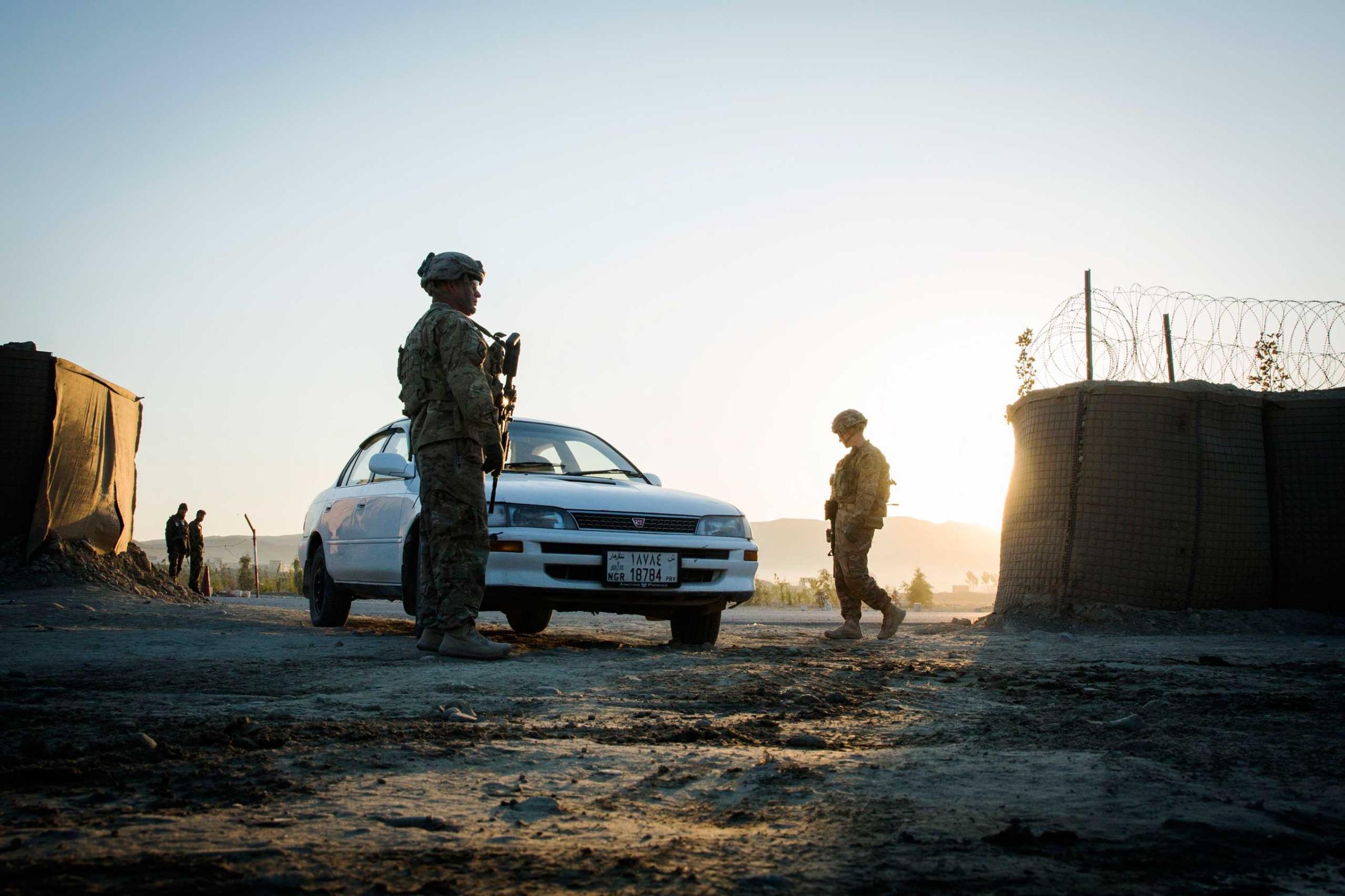



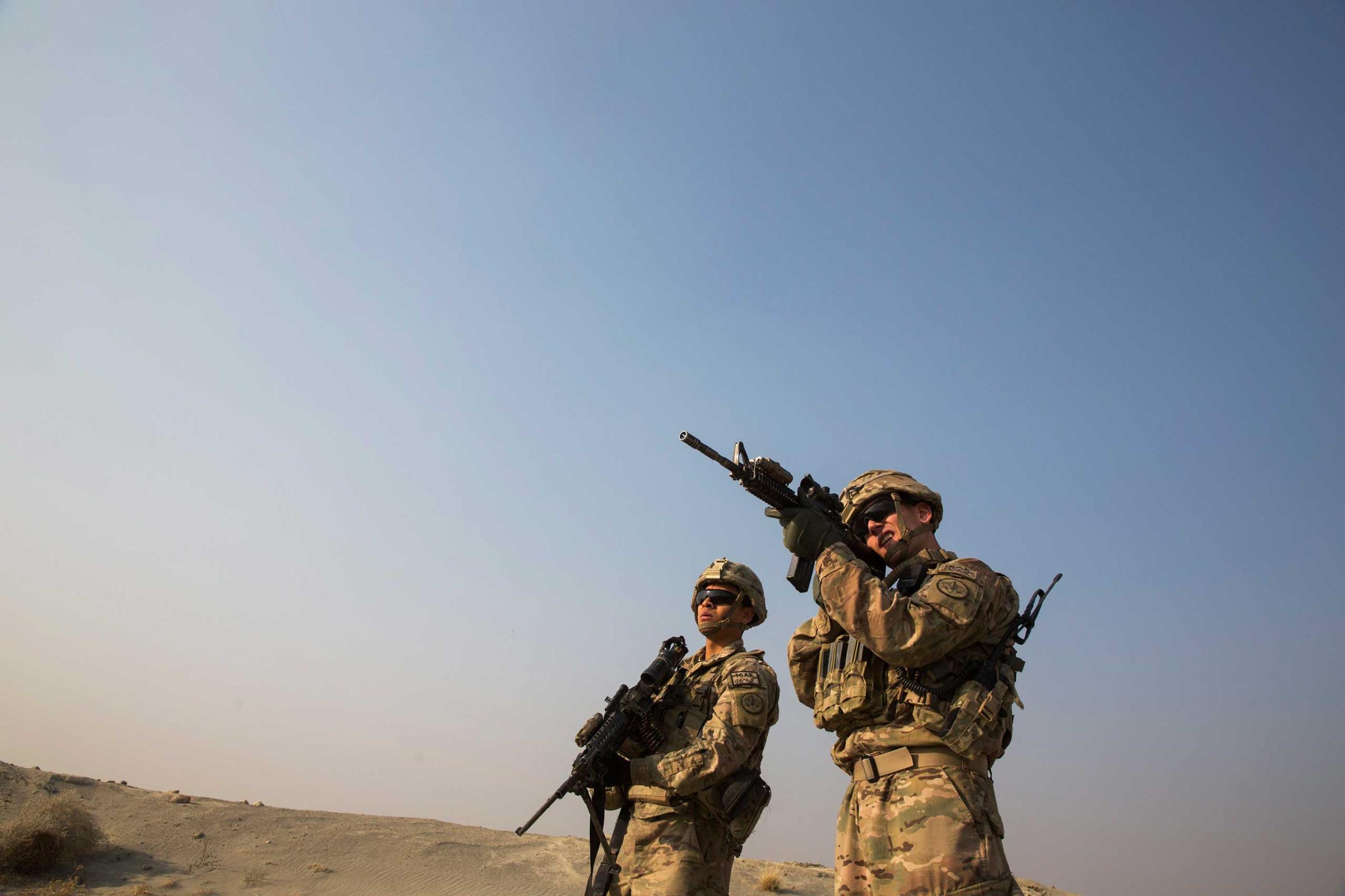
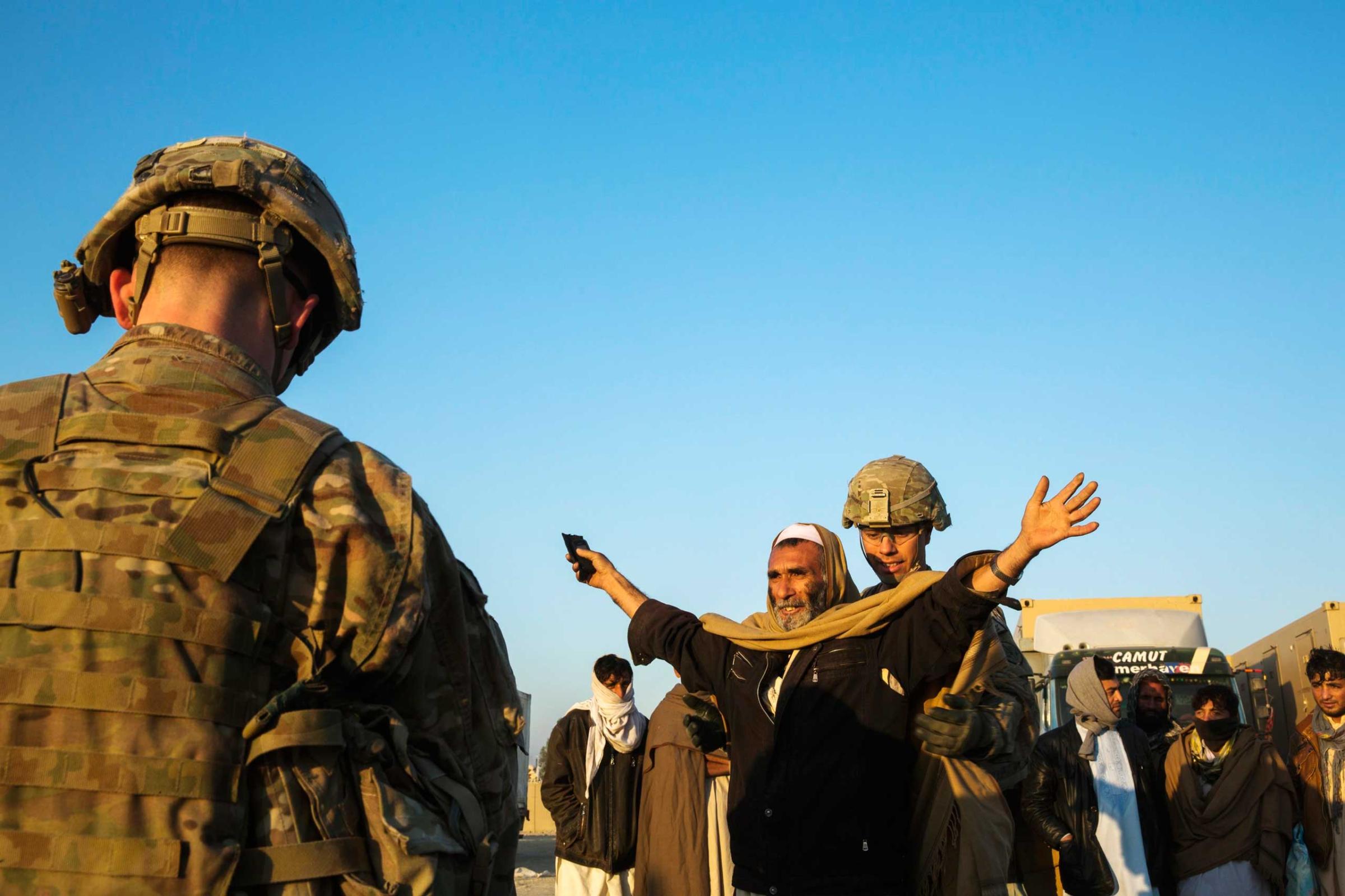
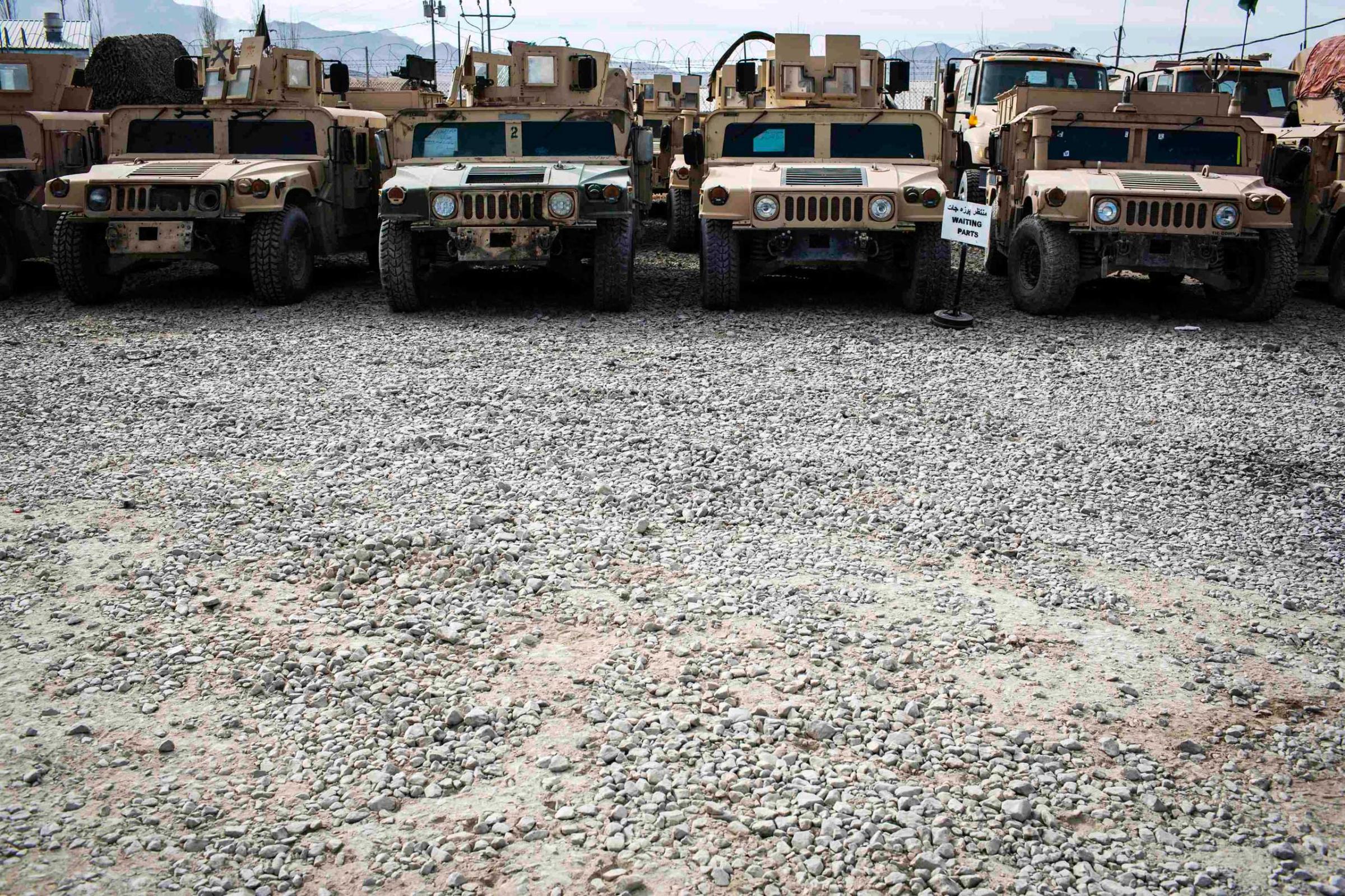
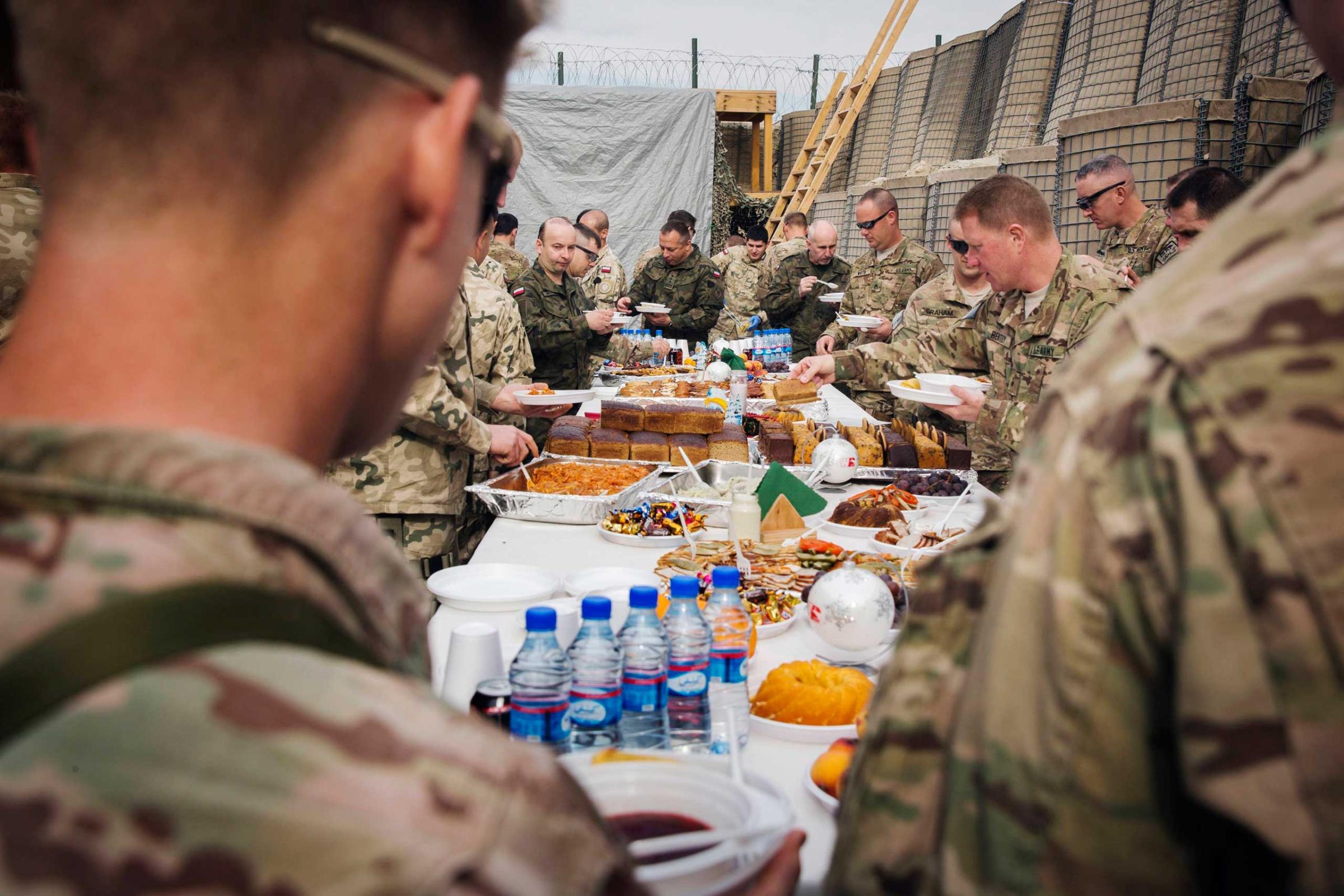
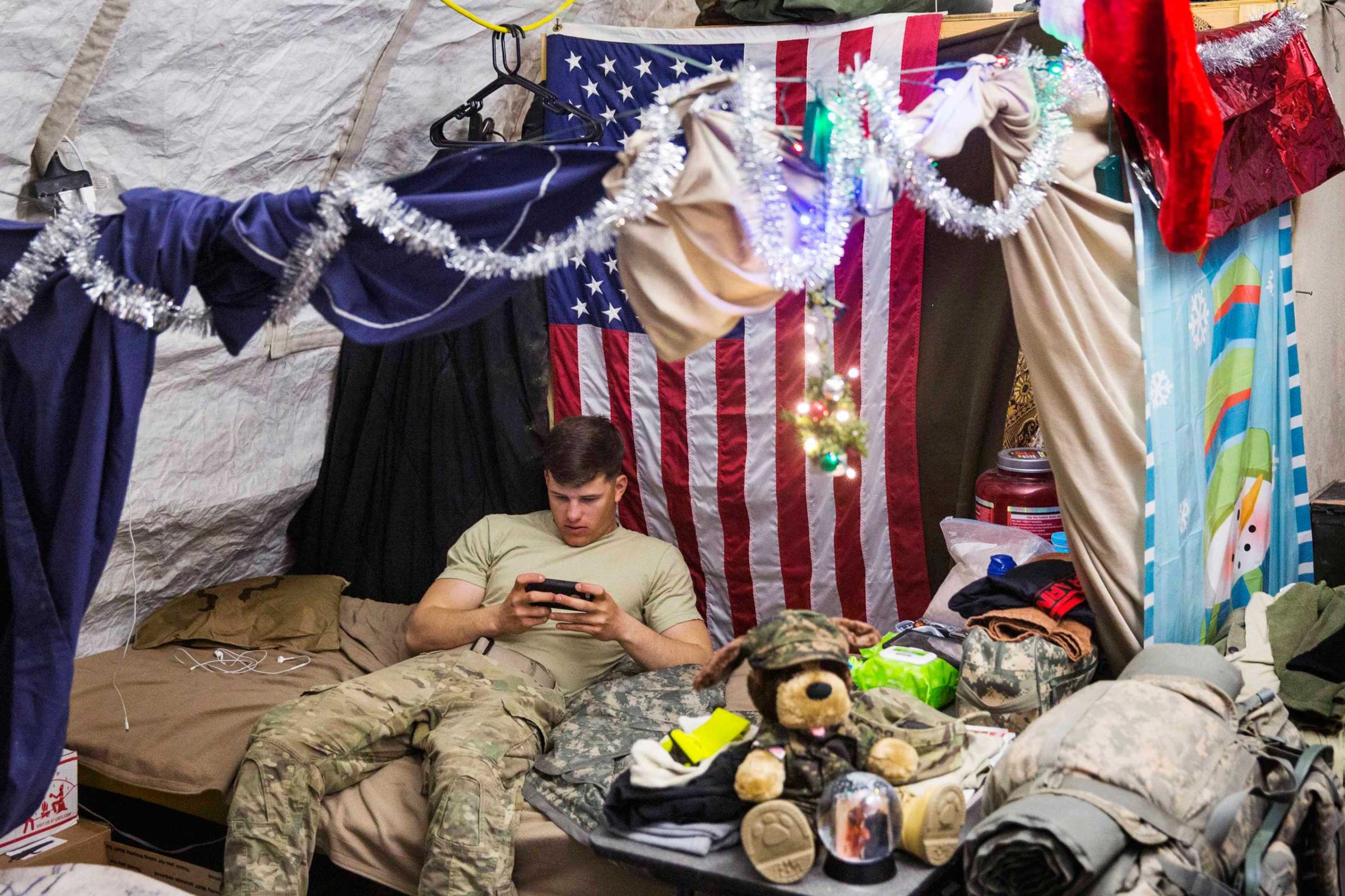
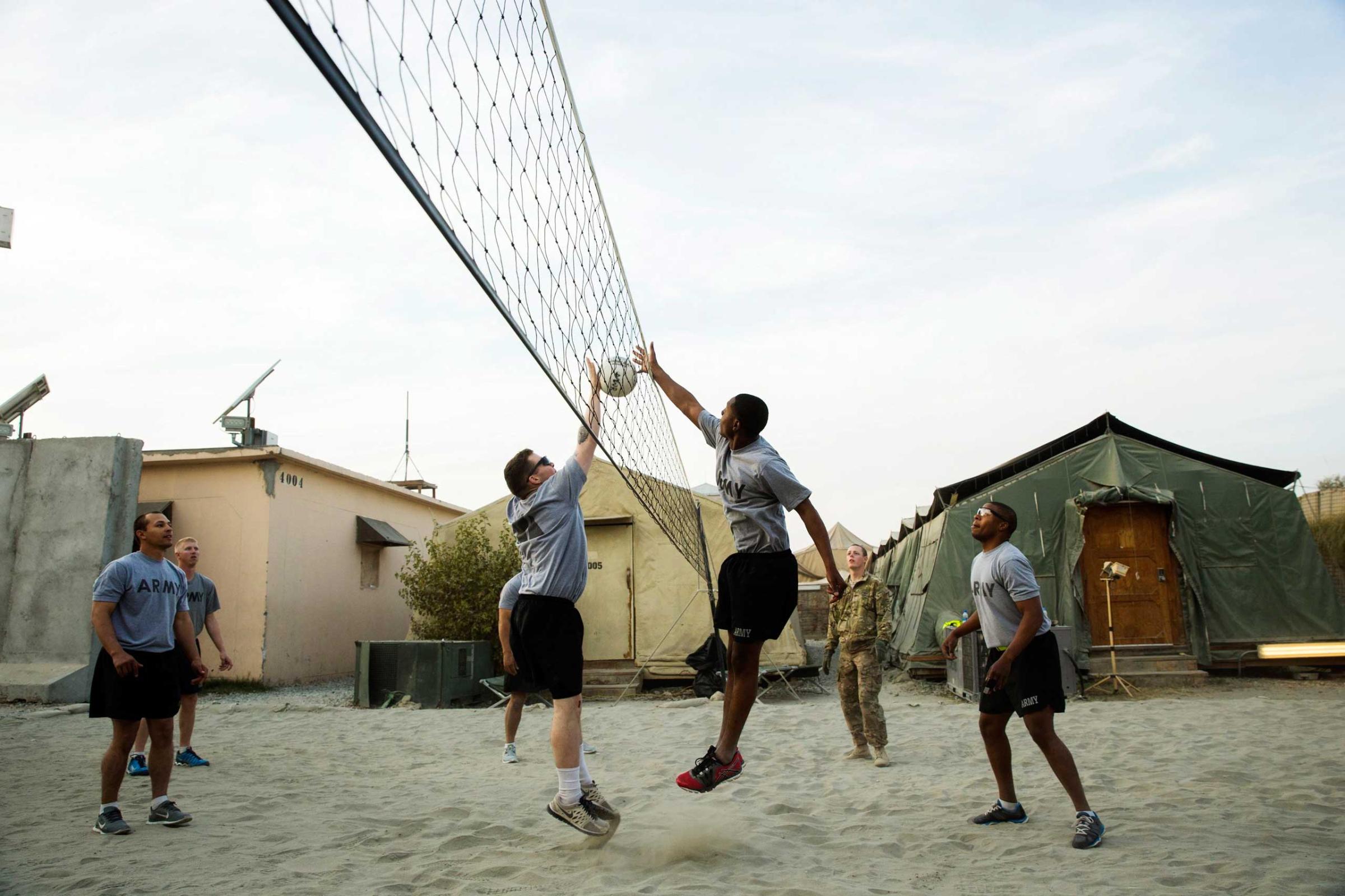
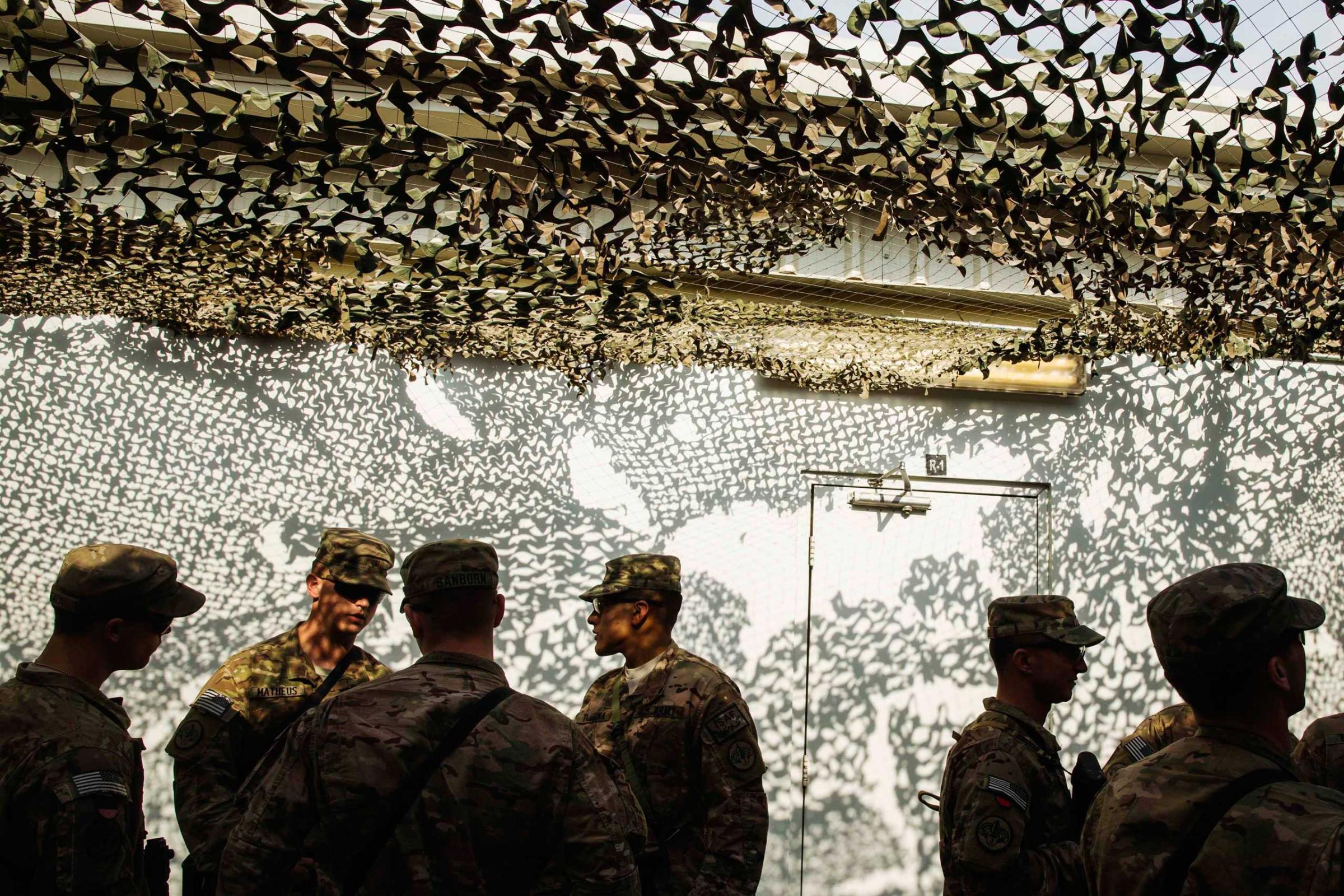
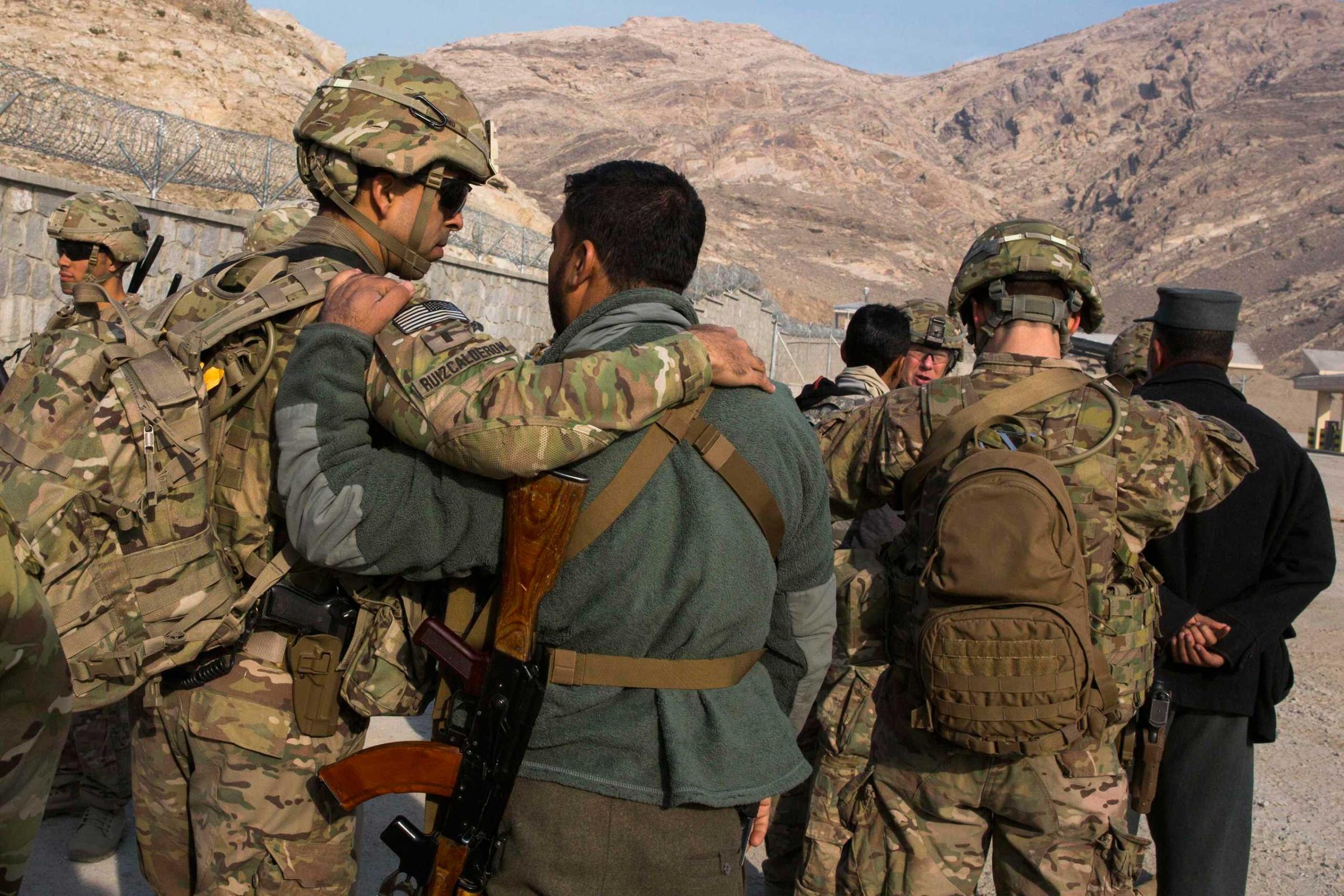
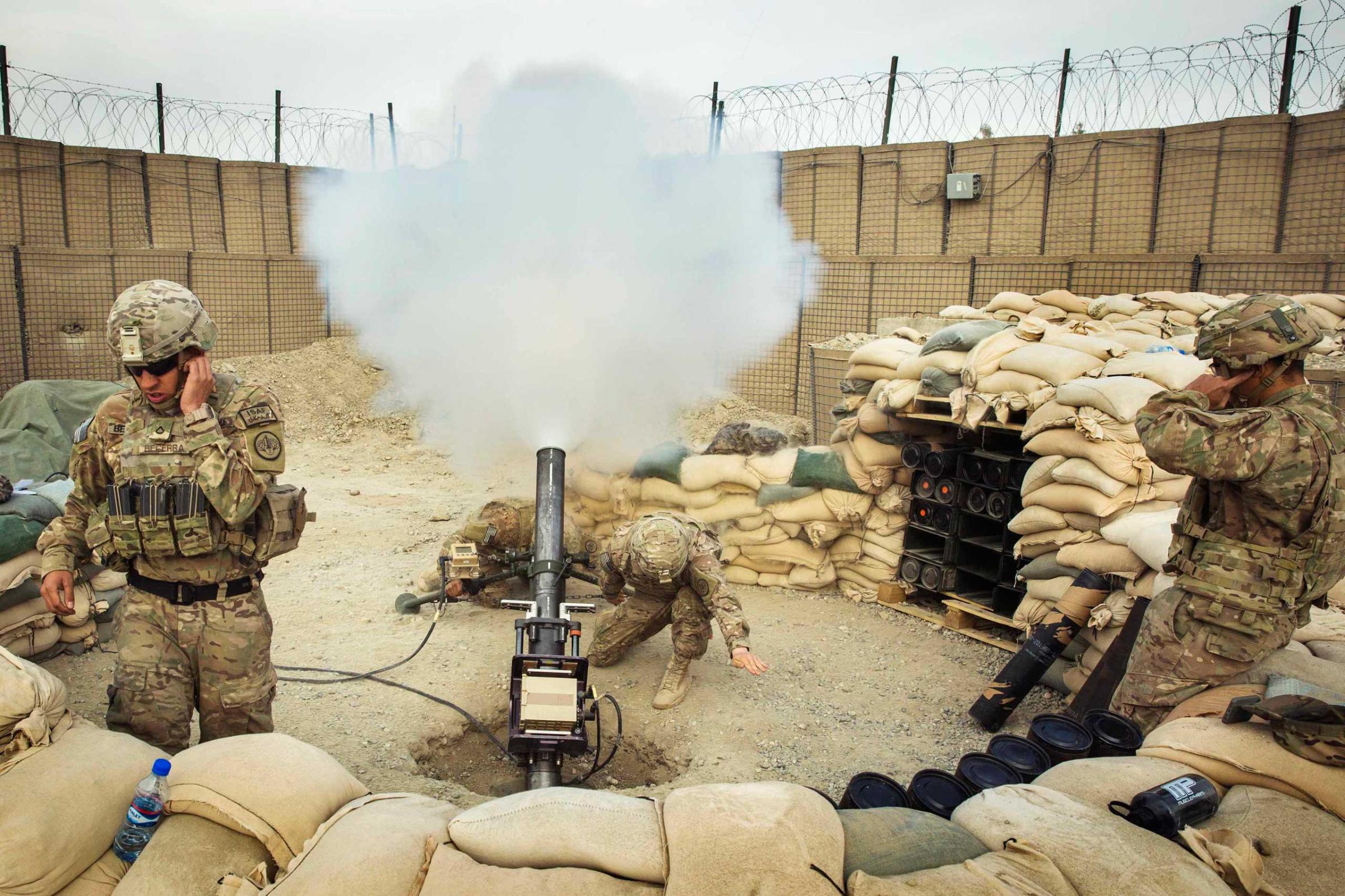
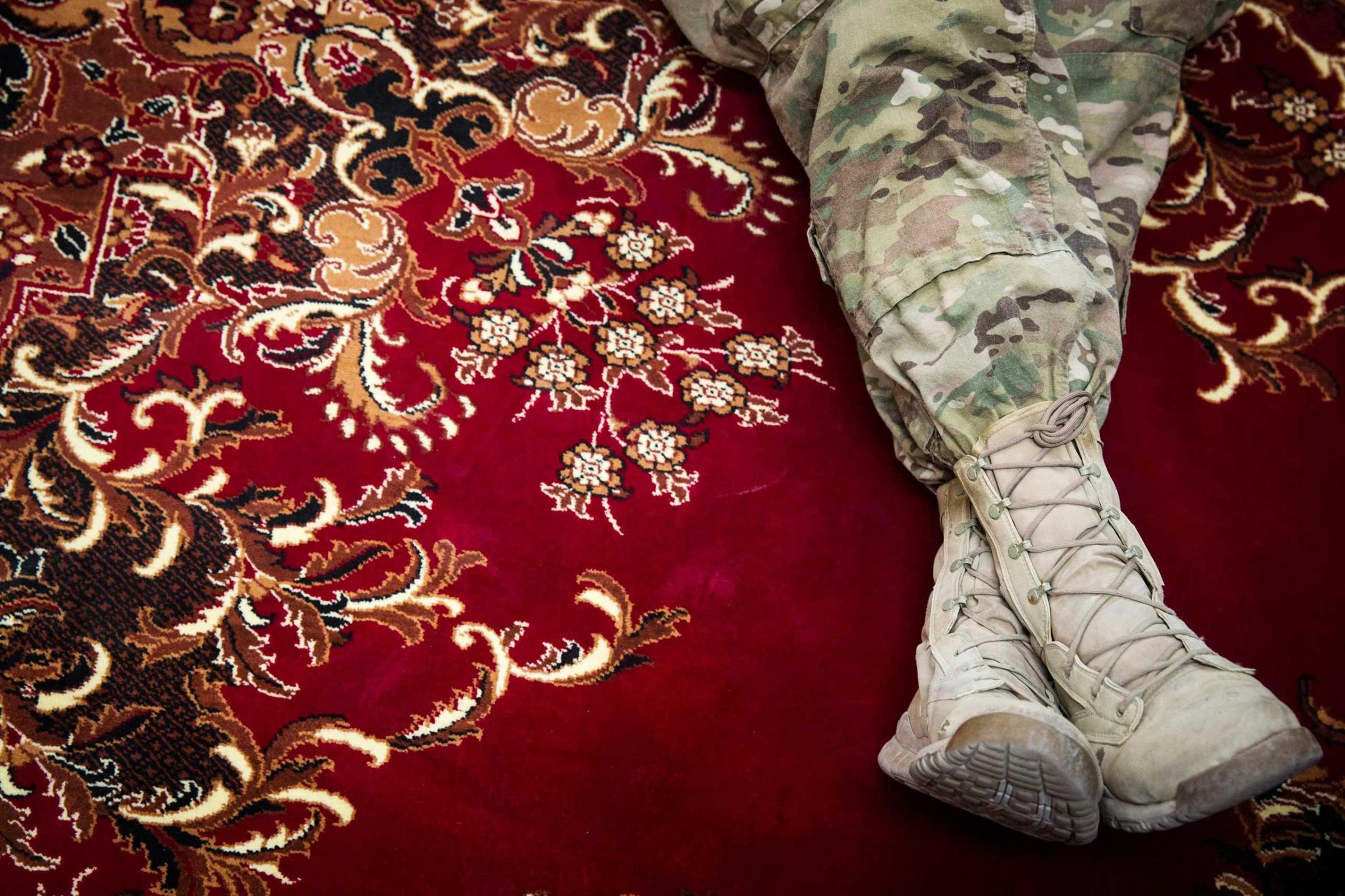
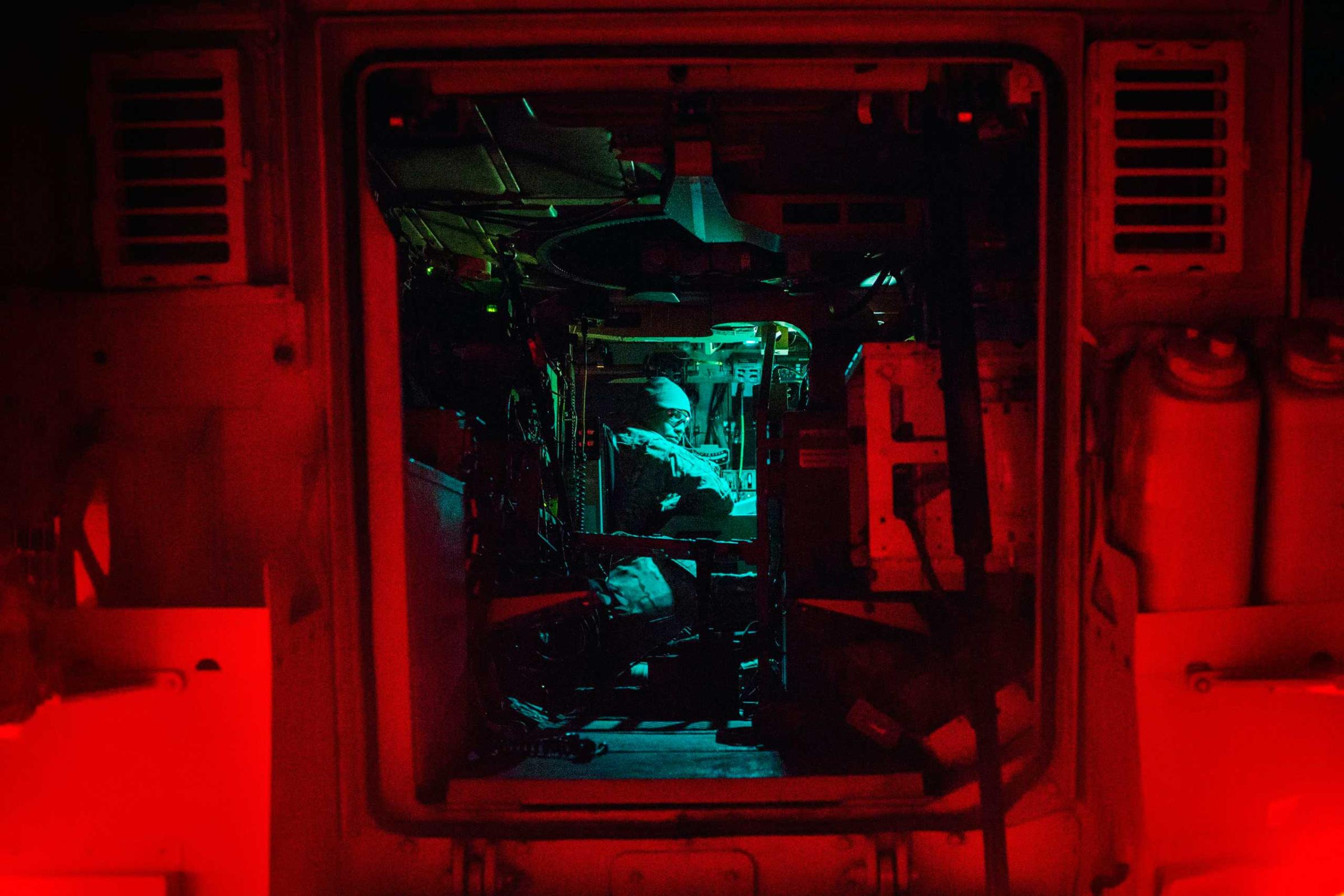

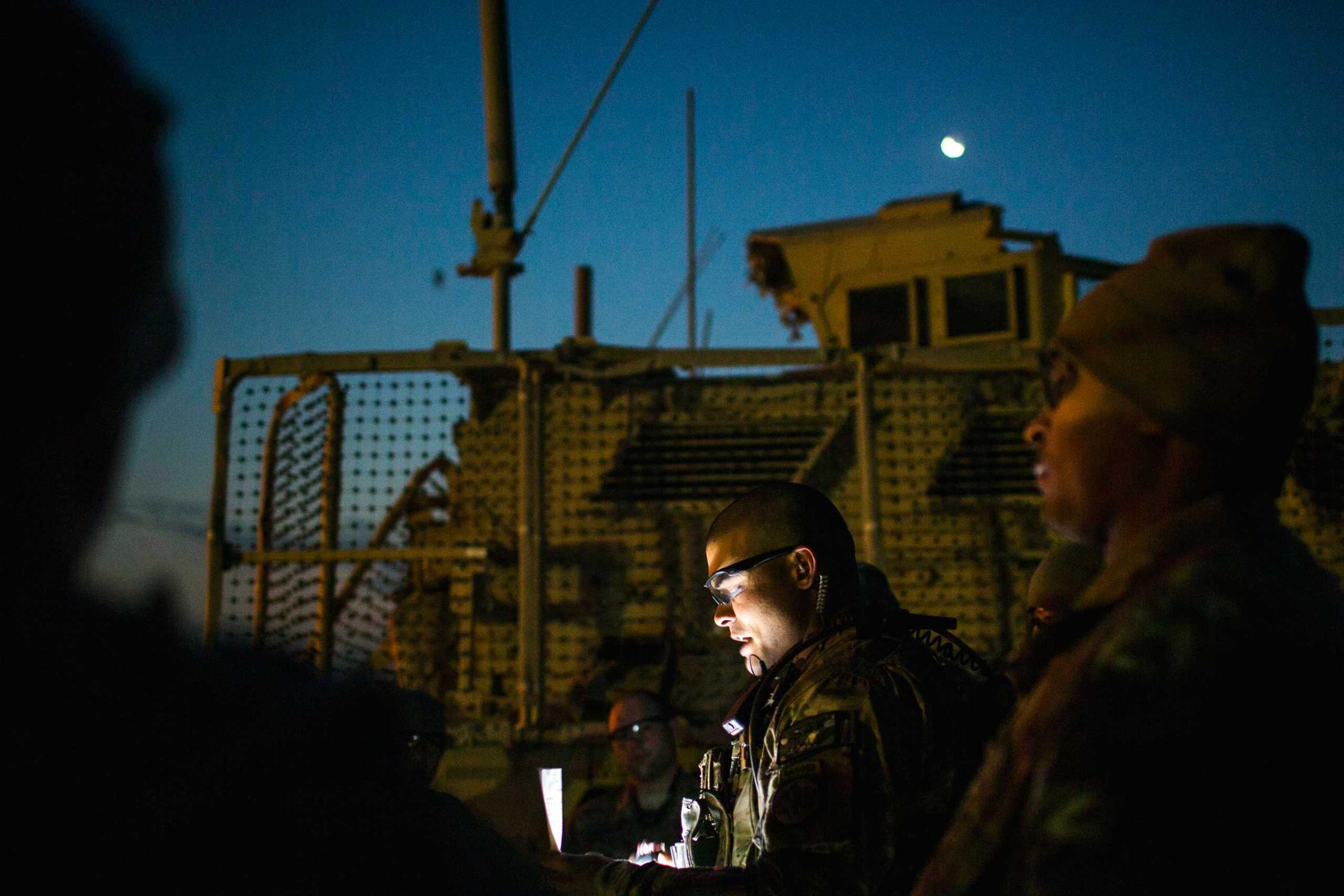
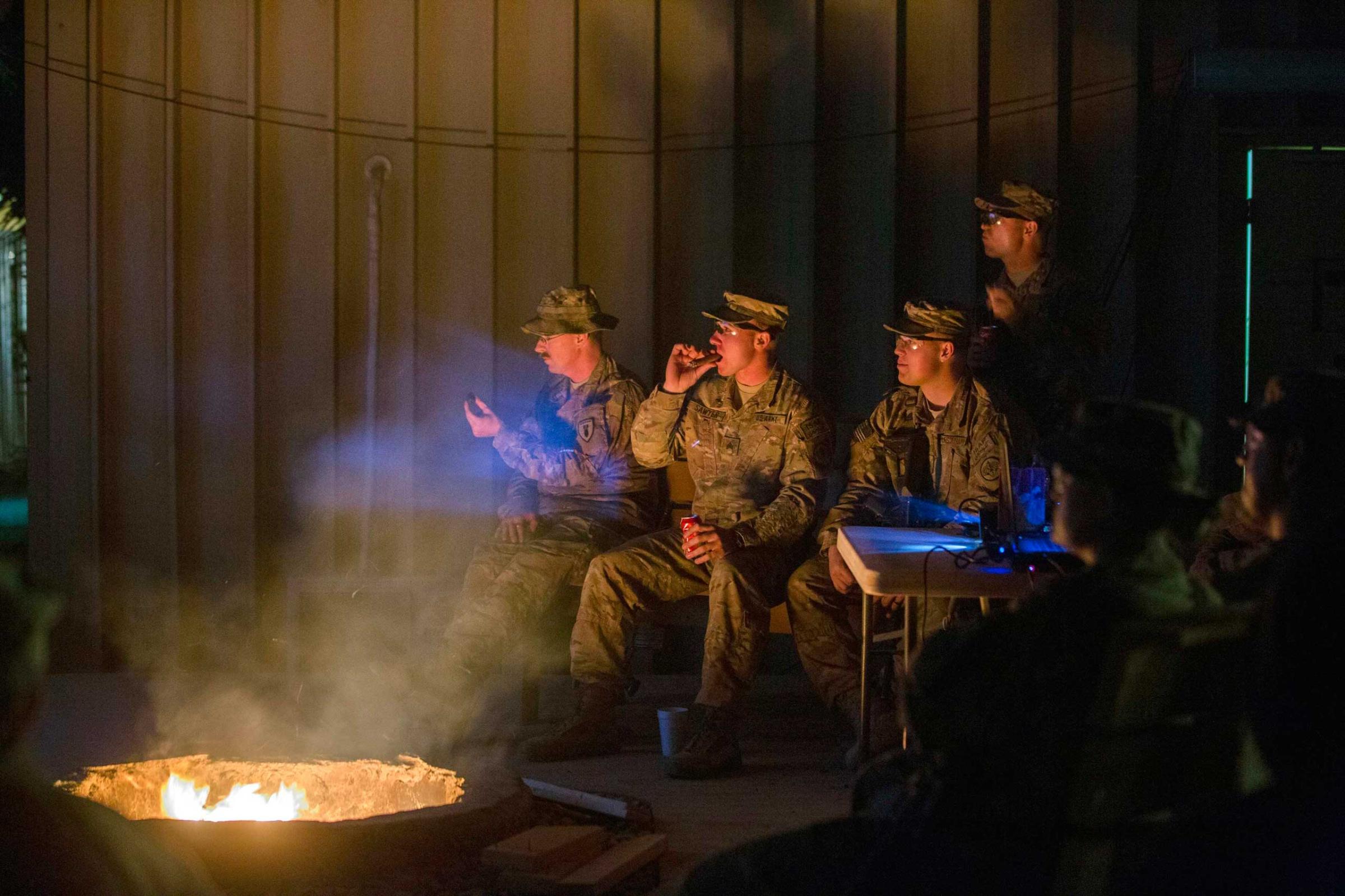
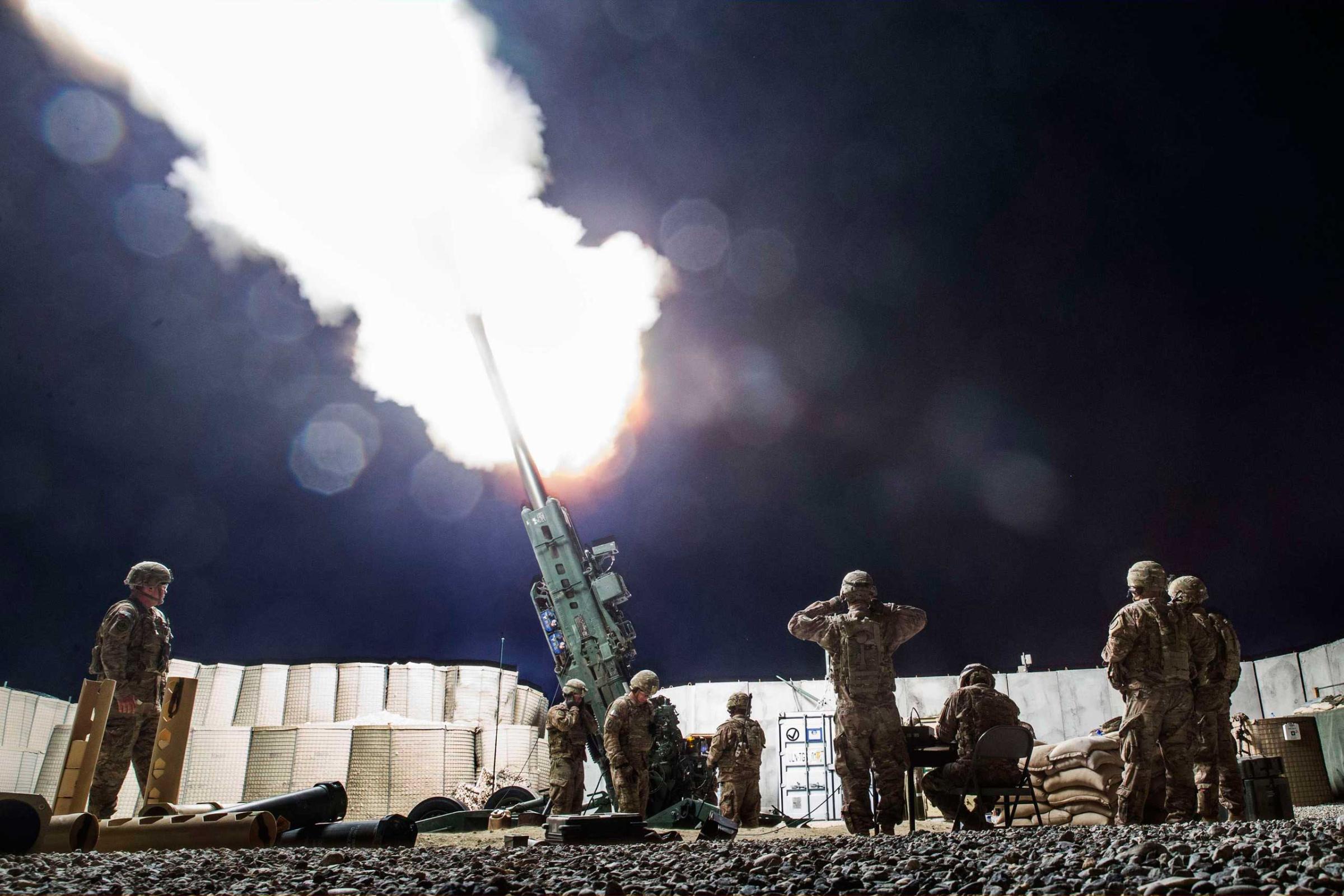
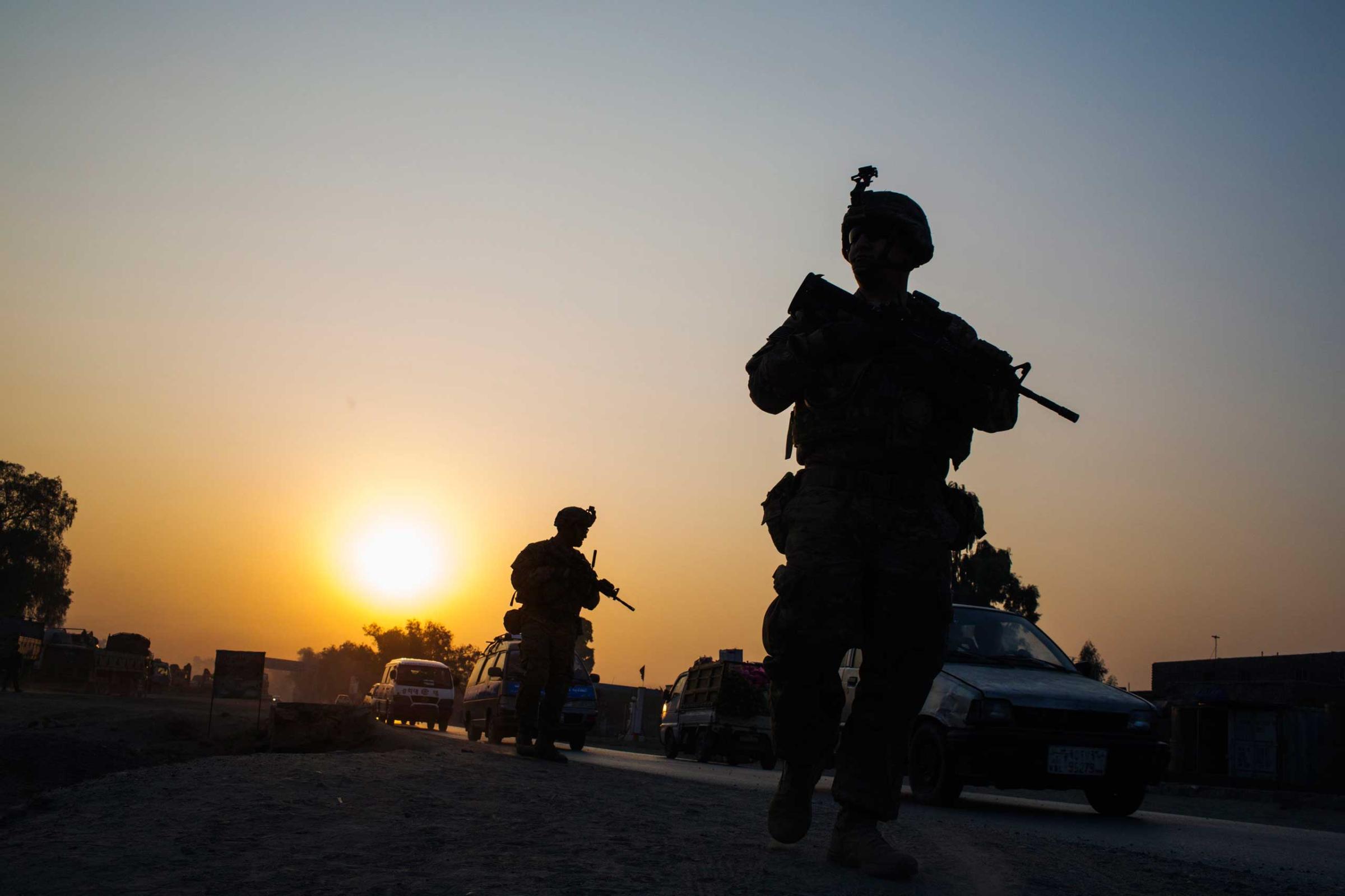

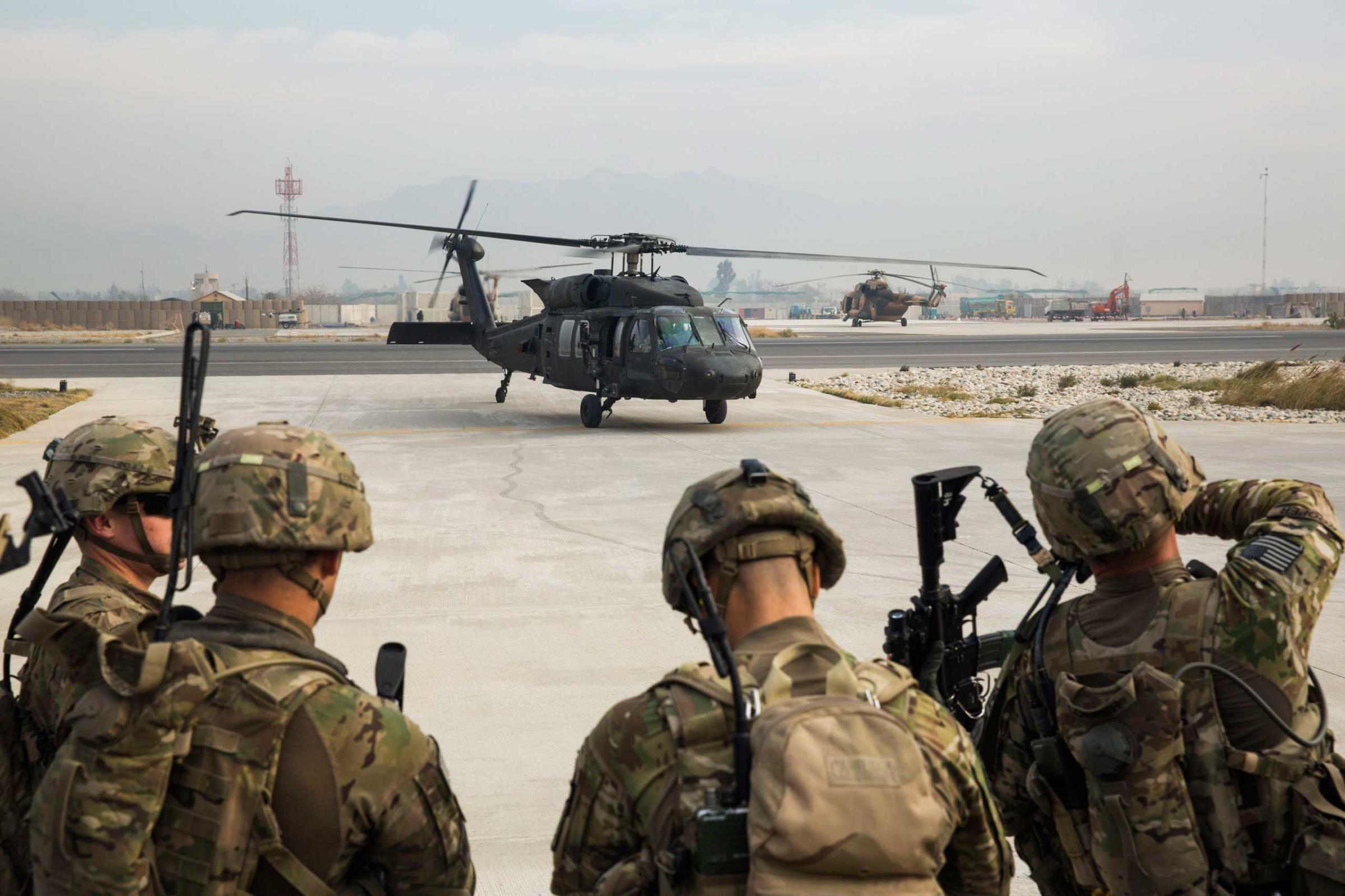


ANOTHER BIG WAR?
But Pentagon officials say Zinni and others advocating a bigger U.S. role in the conflict overlook key questions: While Iraq has allowed 3,100 American troops on its soil, it hasn’t granted permission for a larger force. And those pushing for a special-forces decapitation strikes against ISIS leaders ignore the fact that intelligence on their whereabouts is sparse (it took the U.S. a decade to find Osama bin Laden, and nearly a year to launch the attack that killed him once his suspected lair had been located in Abbottabad, Pakistan).
Rep. Mac Thornberry, R-Texas, chairman of the House Armed Services Committee, said last month that the U.S. push against ISIS has stalled. “The area that they control, have influence, has actually grown and there’s not a lot of prospect in the near term of pushing that back,” he said. He dismissed the President’s options as binary. “I think the President is misleading when he says it’s either sending in a bunch of ground troops or `doing what I want to do’,” Thornberry said. “I do think our approach has to be working with regional allies. They are looking for more U.S. leadership, and part of the challenge is when you place restrictions on what our people can do, how much they can help, then obviously you’re going to be limited.”
Thornberry echoes a GOP refrain: that Obama is leery of using force. “I’m just worried, given the track record, that the President puts political constraints on what we can do rather than just focused on how to get this job done,” he said. “Political constraints are not going to get this job done, even if everything goes well. This is hard enough, even if we don’t tie our own hands.”
Neither the U.S. nor the rest of the world has done a good job convincing young Muslims that ISIS isn’t a good option, Thornberry added. “There is widespread agreement that the ideology is enormously appealing to huge numbers of Muslims, not a majority, but yet especially those in poor economic circumstances, those who feel depressed,” he said. “The appeal of that ideology to those young males in particular is something the world has not come to grips with.”
The international community, Thornberry said, is looking at ISIS through 20th Century eyes. “Part of our problem is that we tend to look at this country by country, and it is not a country by country issue,” he said. “It is a global issue that we’re not dealing with.” How should it be handled? “I’m not going to say an Arab NATO, but some sort of way that countries can work together to confront the ideology as well as what they’re doing on the ground militarily.”
Unlike al-Qaeda, with its plan to create a caliphate, “these guys short circuit that and go right to the caliphate, start behaving like a state, providing social services for their people, send out ambassadors,” Thornberry said. “It just reminds us, we’ve got to be careful about looking at things the way that we want to see them and not seeing what’s really happening.”
The AEI’s Donnelly believes that a determined President could—and should—get a green light from Congress to wage a bigger fight against ISIS. “If the President made the case forcefully, the American people would say, `Hell yea—this is behavior we cannot tolerate,’” Donnelly says. “A President can get what he wants from Congress in wartime.”
But some maintain that Republican calls for a bigger U.S. role—including getting rid of Assad—would likely lead only to a replay of the unsatisfying U.S. efforts in Afghanistan and Iraq. “Greater U.S. involvement in the Syrian civil war is increasingly portrayed in political circles as the main alternative to the Obama Administration’s current approach,” the liberal-leaning National Security Network think tank said ina Feb. 18 report. “But…strategies for the United States to fully enter the Syrian civil war would most likely draw the United States into an unwinnable quagmire and unsustainable nation-building project.”
THE CURRENT CAMPAIGN
A U.S. war planner from Central Command expressed confidence in the seven-month old war’s course during a Feb. 19 background Pentagon briefing. “Our mission has not changed in terms of the degradation, dismantle and eventual defeat of ISIL,” he said. “It remains true to form. And it is generally unfolding as we had planned.” But he stressed, as the Pentagon has repeatedly, that the fighting will likely continue well on into the future, with no termination date yet penciled in. “This is going to take time,” he said. “The degrade phase alone we knew would be a long period of time.”
Dempsey estimated Feb. 19 that it would take up to three years for Iraq to regain its territorial integrity (he didn’t offer a timetable for Syria). “But I think the issues will be generational—20, 30 years—because there is an internal conflict within Islam, and within the Arab world, between moderates and radicals that just isn’t going to end because they stop fighting,” he added.
The U.S. strategy is plain: halt ISIS’s advance by pounding it from the air until local ground forces, with some U.S. help, are ready to attack and retake the land, and—most critically—the cities, under its control. The initial goal is to push ISIS out of Iraq, and then go after them inside Syria.
The U.S. and its allies have dropped more than 8,200 bombs and missiles in close to 2,500 air strikes on ISIS targets, roughly split between Iraq and Syria. The weapons range from 20-pound warheads atop Hellfire missiles fired from Predator and Reaper drones, to 2,000-pound GPS and laser-guided behemoths dropped from B-1 bombers and other warplanes.
The U.S. and its allies attack ISIS targets wherever they’re found, Pentagon officials say. But there weren’t that many to begin with, and many have been destroyed. ISIS fighters hide amid civilians in towns, which reduces the chances they’ll be attacked. “Militarily, ISIL is in decline,” the Central Command briefer said. The constant bombardment has curbed ISIS’s plans to expand, and its options. “He’s in the land of `ors’ versus `ands’ now.”
The U.S.-led air strikes, and the Iraqi and Kurdish ground forces, have penned in ISIS. “This is an enemy that we still assess to be in a defensive posture,” Rear Admiral John Kirby, the Pentagon spokesman, said Feb. 13. While ISIS boasts of its expanding caliphate, it only represents moves “into more ungoverned spaces in Syria,” he added. “The way you govern is you’ve got to have people to govern. So the population areas are the most important areas that we’re focused on.”
A key challenge will be beefing up the now-disappeared Iraq-Syrian border to keep ISIS out of Iraq once it is pushed back into Syria. Even now, the Central Command briefer said, “the safe havens that he has in Syria, and his ability to migrate back and forth, still gives him that micro-offensive capability” shown by the recent attack on the western Iraqi town of Baghdadi.
Through Feb. 4, allied air strikes had damaged or destroyed 4,817 ISIS targets, ranging from tanks (62) to Humvees (257) to “fighting positions” (752), basically fancy foxholes. The strikes also focused on decapitating ISIS’s command, hitting 26 “leadership buildings” and 102 “HQ buildings.” The list isn’t the kind of “target-rich environment” the U.S. Air Force likes. There are few strategic targets listed—nearly two-thirds are troops, foxholes and the vehicles used to get the troops to those foxholes.
“Those are things that ISIL no longer has,” Kirby told reporters. “They’re gone. They’re destroyed. They can’t use them anymore. And this is an enemy that has a limited ability to reconstitute strength, at least material strength.”
But the notion of ISIS is a hierarchical organization misses a key point. Even as it is under daily attack, it has evolved into “a decentralized, diffused, aspirational social movement that follows few orders and few chains of command,” Dafna Rand, who served on Obama’s National Security Council staff, told the House Foreign Affairs Committee Feb. 12.
Syria remains the big issue, just as Pakistan remained a key drag on the U.S. effort in Afghanistan because it offered sanctuary to Taliban militants fighting U.S. troops just across the border. “What we’ve learned from Vietnam forward is you cannot defeat an insurgent group if it has a refuge in a neighboring country,” James Jeffrey, who served as the U.S. ambassador to Iraq from 2010 to 2012, told the House Foreign Affairs Committee Feb. 12. “You have to do something about Syria, and you can’t do anything about Syria without having a better policy towards Assad.”
Training sites for the Syrian rebels are being established in Jordan, Qatar, Saudi Arabia, and Turkey. Iraqi Sunnis also are being trained in Anbar province. “It may not be as fast as some would like, but the inclusion of the Sunni tribes, the inclusion of the Sunnis writ large is an absolute critical component to this all working,” the Central Command briefer said Feb. 19. “And the leadership in Iraq is moving in the right direction to accommodate that.”
Military force can’t defeat ISIS by itself. “U.S. military action must be tied to a civil-military strategy that offers the best possible hope of producing a stable and friendly nation as its ultimate outcome,” Anthony Cordesman, of the Center for Strategic and International Studies, wrote Feb. 13. “No amount of tactical victories in the field, and no amount of U.S. military force that merely defeats the immediate enemy threat, will create that stability.”
THE NARCISSISTIC VIEW OF WAR
Americans are skeptical of another military mission in Iraq following the years, and U.S. lives, expended in Afghanistan and Iraq after 9/11. But one of the Army’s pre-eminent thinkers urges his countrymen not to take the wrong lessons from those campaigns. “The lesson is not that these kinds of missions are impossible,” Army Lieut. General H.R. McMaster told Time Feb. 19. “One of the key lessons is we made it just about as hard on ourselves as we could have, by not acknowledging the need to consolidate gains in either Afghanistan or Iraq.” McMaster, an incumbent member of the Time 100, says inadequate pre-war planning doomed the effort to preserve the “fragile victory” that the U.S. had achieved in Iraq.
He expresses concern that despite the videos, Americans aren’t paying enough attention to the foe. “I wish we could get the American people more interested in who we’re fighting,” he says, with a touch of exasperation. “When you hear statements like `Americans are weary of the effort,’ and so forth, sometimes we don’t spend enough time talking about the nature of our enemies.”
The Germans hid their death camps during World War II. But that’s not the case with ISIS, who uses video to recruit and instill fear in prospective enemies. “ISIL’s brutality is so apparent now because they’re promoting themselves,” McMaster says. “It’s not our reporting that got the American people to say, `Damn, it’s really worth fighting these guys!’—it’s their own propaganda!” Part of the problem, McMaster says, is that the U.S. public views war through too narrow a lens. “We don’t even focus on our enemies; we talk in terms that sometimes could be criticized as narcissistic,” he says. “We define these conflicts in relation to us, rather than pay due attention to the nature of our enemies, what’s at stake, and why it’s worth the effort.”
RETAKING MOSUL
The first real test for the U.S. and its allies will be the fight to retake Mosul, which ISIS seized from the Iraq army last June. The Pentagon is “still shooting for” an April-May launch of the battle to retake the country’s second-largest city. But that’s optimistic, and “we have not closed the door on continuing to slide that to the right”—into the future—the Central Command official said Feb. 19.
Iraqi forces have conducted 20 smaller ground offensives in recent months, and most of them have been “very successful,” the Central Command official said. Small numbers of U.S. troops—dozens to hundreds—could actually accompany Iraqi forces on that mission, to call in air strikes, gather intelligence, and advise the Iraqi forces. That decision, assuming a late-spring offensive, is only weeks away.
“I would not rule out using American ground troops to take territory if that’s necessary to defeat ISIS,” Jeffrey said. But he would rule out a “long-term American presence on the ground, as we saw in Iraq, in Afghanistan, in Vietnam. It does not work.” Obama “is clearly very nervous about the use of military force, particularly ground forces, without a lot of allies, without a lot of legal backing, without the support of you and everybody else,” Jeffrey said at that Feb. 12 hearing. “…he thinks that we have gotten very committed, almost like a drug, to using military force, rather than other means of national power.”
In a bit of psyops, the Central Command briefer detailed just what the up to 2,000 ISIS fighters burrowed into Mosul will face when the fight kicks off. They will total up to 25,000, more than 10 times the defending ISIS force. That’s more than double the historic ratio needed to dislodge and defeat an enemy force in a city. “There will be five Iraqi army brigades, there will be three smaller brigades that will comprise a reserve force,” the Central Command official said. “There will be three pesh[merga] brigades that will help contain from the north and isolate from the west, and then there will be what we’re calling a Mosul fighting force, which will be compromised of largely police and tribal that are being put together right now of mostly former Mosul police.”
There’s no sign yet that ISIS fighters in Mosul are quaking in their boots. And while the Pentagon is guardedly optimistic the U.S. and its allies will prevail, critics have their doubts. “Retaking Mosul is going to be like Fallujah on steroids,” the AEI’s Donnelly says, referring to a pair of bloody battles in that western Iraq city that killed more than 100 Americans. “If I were President, I’d tell Martin Dempsey, `We have to win, and win faster.’ And if that means American boots on the ground, so be it.”
More Must-Reads from TIME
- Donald Trump Is TIME's 2024 Person of the Year
- Why We Chose Trump as Person of the Year
- Is Intermittent Fasting Good or Bad for You?
- The 100 Must-Read Books of 2024
- The 20 Best Christmas TV Episodes
- Column: If Optimism Feels Ridiculous Now, Try Hope
- The Future of Climate Action Is Trade Policy
- Merle Bombardieri Is Helping People Make the Baby Decision
Contact us at letters@time.com